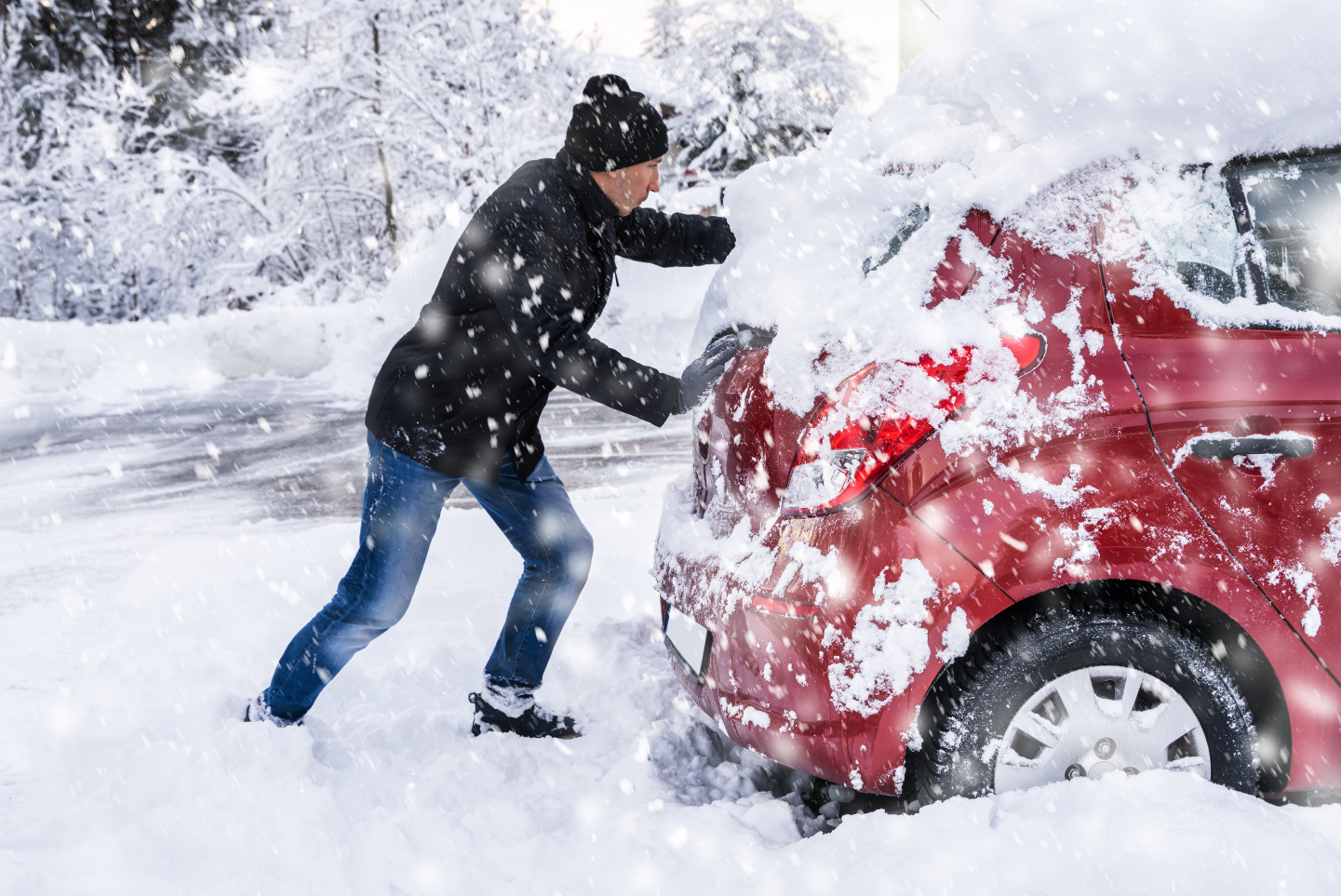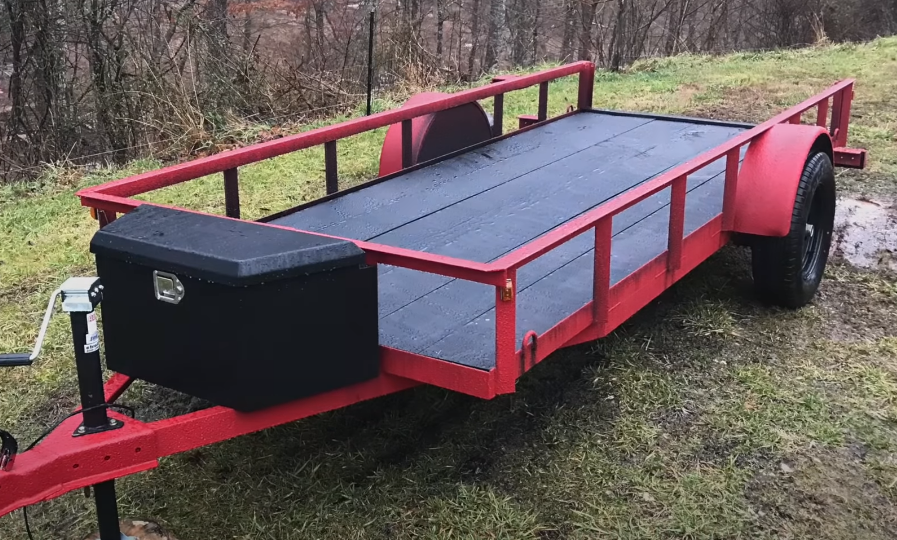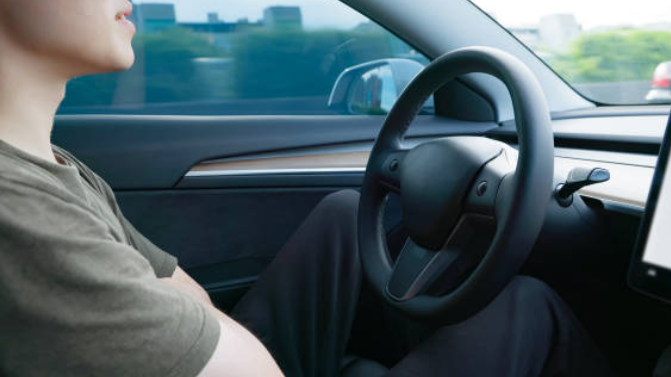What To Do If Your Car Gets Stuck in Snow?
Winter weather can turn even the shortest drive into a challenging experience. Snow and ice create hazardous road conditions, often leading to cars getting stuck. While it can be a frustrating and sometimes frightening situation, knowing how to handle it can make all the difference.
In this guide, we’ll walk you through the steps to safely and effectively get your car unstuck, when to call for help, and how to prevent getting stuck in the first place.

Safety First
The most important thing to do when you realize your car is stuck in the snow is to stay calm. Panic can lead to poor decision-making, increase the risk of injury, or make the situation worse. Here’s what you should do first:
- Assess the Situation: Before you do anything, take a moment to evaluate the situation. Ensure that your car is not blocking traffic, and if it is, turn on your hazard lights to alert other drivers.
- Check for immediate dangers: Make sure there are no immediate dangers, such as oncoming traffic, especially if you're on a busy road or highway. If you’re in a remote area, assess your surroundings for any potential hazards.
If the situation looks manageable and it’s safe to proceed, you can attempt to get your car unstuck by following these steps:
- Clear Snow from the Tires: Use a snow shovel or even your hands to clear snow away from the wheels, especially around the drive wheels. Removing as much snow as possible gives your tires a better chance to grip the ground.
- Use Traction Aids: Place materials like sand, kitty litter, car mats, or even branches under the tires to provide additional traction. These materials can help your tires gain the grip they need to move.
- Rock the Car Gently: Get in the car, shift into the lowest gear (or 1st gear for manual transmissions), and gently accelerate forward. If the car moves, great! If it doesn’t, shift into reverse and try to back up. Alternate between drive and reverse to create a rocking motion. Be gentle and avoid spinning the tires too much, as this can dig the car deeper into the snow.
- Let Air Out of Tires (Cautiously): If you have a tire gauge and pump, you can let some air out of your tires to increase their surface area and improve traction. Reduce the tire pressure to around 20 psi, but make sure to reinflate them as soon as possible.
- Utilize Snow Chains: If you have snow chains or tire socks, this is the perfect time to put them on. They provide excellent traction in snowy and icy conditions.

Sometimes, despite your best efforts, your car might remain stubbornly stuck. Knowing when to call for help is crucial.
- Recognize When You’re Defeated: If you’ve tried the above steps and your car still won’t budge, it might be time to call for professional assistance. Overexerting yourself or your vehicle can lead to injury or damage.
- Contact Roadside Assistance: If you have a roadside assistance plan, such as AAA, now is the time to use it. They can dispatch a tow truck or someone equipped to handle snowy conditions.
- Stay Safe While Waiting: If you’re stuck in a remote area or in extreme cold, conserve your car’s battery and fuel. Run the engine for short periods to stay warm, and ensure the exhaust pipe is clear of snow to prevent carbon monoxide poisoning.
Of course, the best way to deal with getting stuck in the snow is to avoid it altogether. Here are some tips to help you prevent this situation:
- Prepare Your Vehicle: Ensure your vehicle is winter-ready. This includes having winter tires, which provide better traction in snow and ice, and keeping your vehicle well-maintained with adequate antifreeze and windshield washer fluid.
- Carry essential supplies: Always have a winter emergency kit in your car. This should include a snow shovel, an ice scraper, blankets, extra-warm clothing, food, water, a flashlight, and a first-aid kit.
- Drive Smart: Avoid driving in severe weather conditions whenever possible. If you must drive, go slowly and increase your following distance to account for longer stopping times. Be especially cautious on bridges and overpasses, which can freeze faster than other road surfaces.
- Plan Your Route: Stick to main roads that are more likely to be plowed and salted. Avoid shortcuts or side roads that might not be as well maintained.
- Monitor weather conditions: Stay informed about the weather forecast. If a severe storm is predicted, try to delay your trip until the roads are safer.
What should I do if my car is stuck and I don't have any traction aids?
In the absence of traction aids like sand or kitty litter, you can use your car mats. Place them under the drive wheels to help gain some traction. Be cautious to avoid damaging them.
Is it safe to rock my car back and forth?
Yes, rocking your car gently can help free it from the snow. Shift between drive and reverse, but do so gently to avoid spinning your tires excessively and digging yourself in deeper.
How do I prevent my car from getting stuck in the first place?**
Equip your car with winter tires, carry an emergency kit, avoid driving in severe weather, and stick to main roads that are more likely to be plowed and salted.
When should I call for professional help?
If your efforts to free the car are unsuccessful, or if you feel unsafe continuing to try, it’s time to call for roadside assistance or a tow truck. Your safety is a priority.
How can I stay safe while waiting for help?
A: Stay inside your car to stay warm and protected from the elements. Run the engine for short periods to maintain warmth, but ensure the exhaust pipe is clear of snow to prevent carbon monoxide poisoning.
Getting stuck in the snow is a common but manageable problem if you stay calm and follow the right steps. By assessing the situation, attempting safe methods to free your vehicle, and knowing when to call for help, you can navigate this challenge effectively. Additionally, taking preventative measures can significantly reduce the likelihood of finding yourself in such a predicament. Prepare for winter driving, and you’ll be better equipped to handle whatever Mother Nature throws your way.
Click on the following link to read another blog post: Understanding Engine Oil Weight: What It Means? And Why It Matters for Your Vehicle?

















